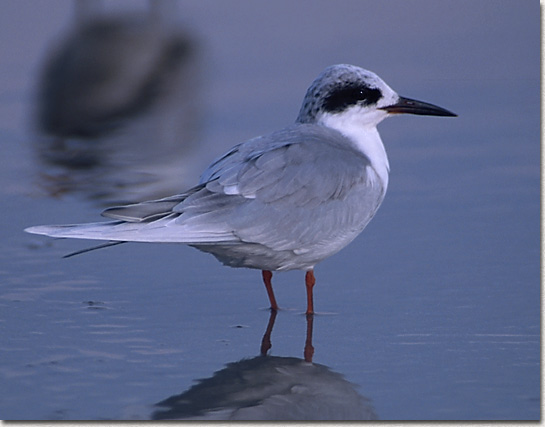

|
Common Tern |
|
Sterna hirundo |
| Description: 13-16" White with black cap and pale gray back and wings, bill red (breeding) with black tip, tail deeply forked, similar to Forster's Tern, but lacks frosty wing tip | Habitat: Nest in large colonies along Atlantic coast and inland on sandspits or isolated islands. Common at lakes, ponds, bays, beaches, coastal waters. Rarely flies very far out to sea. Often seen in migration along Pacific coast. |
| Nesting: 2 or 3 spotted olive eggs laid in a depression in sand or cup of dead grass, located on sandy or pebbly beaches, nests in colonies. | Range: breeds in scattered colonies from Canada south to Caribbean, winters from Texas, Florida to South America. |
| Voice: kip-kip-kip, also tee-aar | Diet:
Fish (90% of diet), crustaceans, occasionally insects. |
| Notes: Colonies of tens to thousands, pair occupy and defend feeding territory away from breeding colony, especially prior to incubation; defense mostly by male, third egg smallest and least likely to survive, second clutches rarely successful, habitually defecate at lowest point of aggressive dive, often hitting attacker with feces. |
| When present in Oklahoma: seen during summer/winter migration, not native to Oklahoma |